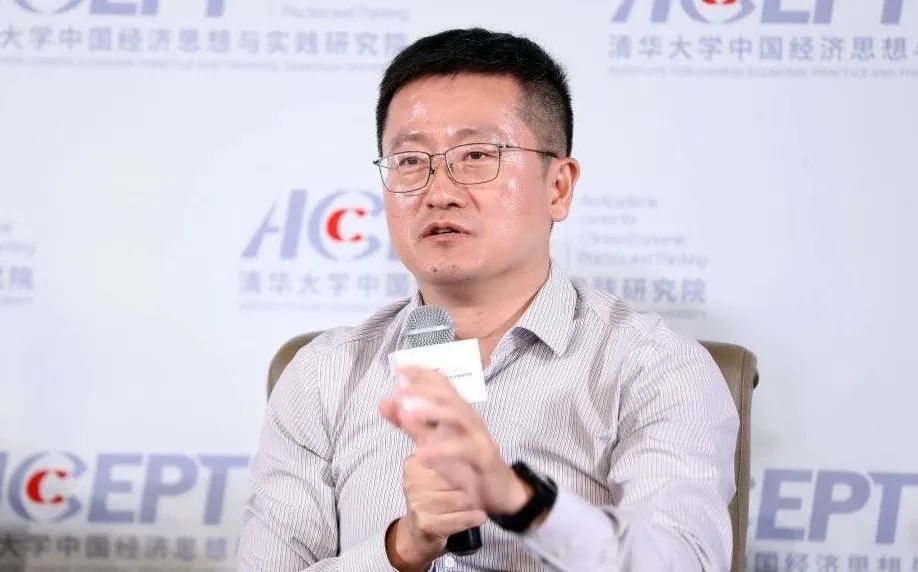Zhang Ming: Resolving local government debt problem requires central government to take on greater leverage
The following is a summary of Zhang Ming's comments during a roundtable discussion at the 45th Tsinghua University Forum on China and the World Economy held at Tsinghua University, Beijing, on June 17, 2023. Zhang is the Deputy Director of the Institute of Finance and Banking (IFB) at the Chinese Academy of Social Sciences.
On June 17, 2023, the 45th Tsinghua University Forum on China and the World Economy, hosted by Tsinghua University's Academic Center for Chinese Economic Practice and Thinking (ACCEPT) in partnership with the university's School of Social Sciences and School of Economics and Management, was held on campus. The Deputy Director of the Institute of Finance and Banking (IFB) at the Chinese Academy of Social Sciences, Zhang Ming, participated in a roundtable discussion at the forum alongside other distinguished guests where he commented on the current state of China’s economy.

On June 17, 2023, the 45th Tsinghua University Forum on China and the World Economy was held inside the Weilun Building’s main lecture hall on campus at Tsinghua University’s School of Economics and Management. The biannual event was hosted by Tsinghua University’s Academic Center for Chinese Economic Practice and Thinking (ACCEPT) under the theme of 2023 Mid-Year Economic Outlook. During the forum’s proceedings, Zhang Ming, Deputy Director of the Institute of Finance and Banking (IFB) at the Chinese Academy of Social Sciences, participated in a roundtable discussion alongside other distinguished guests where he commented on the current state of China’s economy.
The American economy performed better in the first half of the year than had previously been widely forecasted. Although the United States has raised its interest rates ten times since last year, equating to a total of 500 basis points, its economic situation has remained quite promising. This mainly reflects the U.S. government's well-devised and well-timed “post-pandemic” macroeconomic policy: stimulating household consumption with fiscal policies such as tax cuts and subsidies directly targeted at the consumption side, while maintaining market liquidity through monetary policies coupled with lower costs for issuing public debt. In the short term, the economic situation in the U.S. is expected to remain stable and in good condition, with any downward readjustment of interest rates being unlikely for the remainder of the year.
Since March of last year, the nonstop increase of interest rates across developed economies has contributed to greater instability in the global financial market, which played a definitive role in triggering the banking crisis that resulted from the failures of Silicon Valley Bank and Credit Suisse. At present, the balance sheets of large U.S. commercial banks are relatively healthy and with ample liquidity, so it is highly unlikely that the latest round of interest rate hikes will pose any systemic financial risks to the U.S. financial market. However, if the U.S. Federal Reserve does not reduce interest rates in the second half of the year, financial risks will continue to multiply in some areas, which may then spread to small and mid-sized banks through bonds, real estate and other channels.
China's overall export growth exceeded expectations during the three years of the global pandemic, with an extra boost from the dislocation caused by the pandemic shock having been the most important driving factor. Since the beginning of the year, China's export market has undergone a structural transformation, with its rate of export growth declining for the European Union and rising for the Association of Southeast Asian Nations (ASEAN). Even so, the total volume of exports to emerging markets in ASEAN is still small compared with that of the European and American markets, with the latter to remain China's most important export markets over the short term.
In turning to the domestic market situation, the current pressure on local governments to improve economic growth indicators has become overly burdensome, with the conventional resources at their disposal and room for policy maneuver to promote growth having become increasingly limited. Meanwhile, local officials are struggling to meet performance expectations, all of which is not favorable for sustained long-term development. Central and western regions of the country face challenges managing current levels of existing debt on their own, which means that tackling local government debt must rely on the central government taking on greater financial leverage. It will be necessary to put into place an institutional framework that is both highly transparent and credible, one that relies on central and local governments working together alongside commercial banks to share out the costs associated with resolving the local debt problem.




